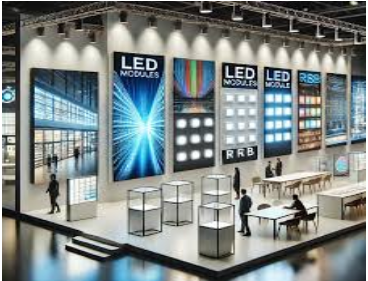Why LED Modules Are Revolutionizing Architectural Lighting

Introduction
Architectural lighting is more than just illumination—it’s about enhancing design, shaping perception, and creating mood within a space. As modern architecture pushes creative boundaries, lighting solutions must evolve alongside it. Enter the LED module: a compact, powerful, and highly customizable lighting component that is rapidly transforming the way designers and architects approach lighting. This article explores why LED modules have become a cornerstone in the world of architectural lighting.
What Are LED Modules?
LED modules are pre-assembled, ready-to-install lighting units that contain LED chips, heat sinks, lenses, and often integrated drivers. Available in various forms like linear strips, round panels, RGB color modules, and waterproof units, these modules are designed for versatility and efficiency. Unlike traditional bulbs or tubes, LED modules offer focused light distribution, superior color control, and longer lifespans, making them ideal for architectural applications that demand precision and aesthetics.
Design Flexibility and Customization
One of the primary reasons LED modules are revolutionizing architectural lighting is their flexibility. Architects can integrate them into ceilings, walls, signage, and structural elements with ease. Thanks to their compact size and modular nature, LED modules can be customized to match specific dimensions, color temperatures, and beam angles. Whether it's a warm glow along a staircase or a vibrant light wall in a commercial lobby, LED modules give designers the freedom to bring creative visions to life.
Energy Efficiency and Cost Savings
LED modules are significantly more energy-efficient than traditional lighting solutions like incandescent or halogen lights. They consume less power while delivering higher lumens per watt, resulting in reduced energy bills for building owners. Additionally, their long operational lifespan—often exceeding 50,000 hours—translates to lower maintenance costs and fewer replacements over time. This makes them a sustainable and cost-effective choice for long-term architectural projects.
Enhanced Aesthetic and Creative Possibilities
Lighting plays a critical role in architectural aesthetics, and LED modules open the door to endless creative possibilities. With precise color rendering, smooth dimming capabilities, and RGB options, designers can create dynamic lighting effects and mood-specific environments. LED modules are commonly used in applications like façade lighting, backlighting for signage, cove lighting, and feature walls, allowing architects to add dramatic visual impact to both interiors and exteriors.
Smart Control and Integration
Modern architectural projects often include smart building systems, and LED modules are fully compatible with these technologies. Many come equipped with support for DMX, DALI, Zigbee, or Bluetooth control protocols, allowing users to adjust brightness, color, and timing with ease. Integration with motion sensors, daylight sensors, or building management systems (BMS) adds a new level of automation, enhancing energy efficiency while creating responsive and interactive lighting environments.
Durability and Environmental Benefits
LED modules are built to last and perform in various conditions. Many models are waterproof (IP65 or higher), resistant to vibration, and designed to operate in extreme temperatures. This makes them suitable for both indoor and outdoor architectural use. Furthermore, LED modules are environmentally friendly, often containing no hazardous materials and meeting RoHS standards. Their low power consumption also reduces carbon emissions, aligning with green building practices.
Future Trends in Architectural Lighting
The future of architectural lighting lies in tunable white LEDs, human-centric lighting, and highly customizable smart modules. As designers increasingly prioritize wellness and sustainability, LED modules with adjustable color temperatures and circadian rhythm support are gaining popularity. Miniaturized and flexible modules are also making it easier to integrate lighting into unconventional spaces and shapes. The next wave of architectural lighting is smart, sustainable, and centered around the capabilities of LED modules.
Conclusion
LED modules have redefined what’s possible in architectural lighting. Their combination of flexibility, energy efficiency, aesthetic versatility, and smart functionality makes them a top choice for modern lighting design. As architecture continues to evolve, LED modules will remain at the forefront—offering designers, architects, and builders a powerful tool to illuminate spaces beautifully and sustainably. Whether for a bold commercial façade or a subtle residential feature, LED modules are lighting the way to the future.
- Information Technology
- Office Equipment and Supplies
- Cars and Trucks
- Persons
- Books and Authors
- Tutorials
- Art
- Causes
- Crafts
- Dance
- Drinks
- Film
- Fitness
- Food
- Jeux
- Gardening
- Health
- Domicile
- Literature
- Music
- Networking
- Autre
- Party
- Religion
- Shopping
- Sports
- Theater
- Wellness


